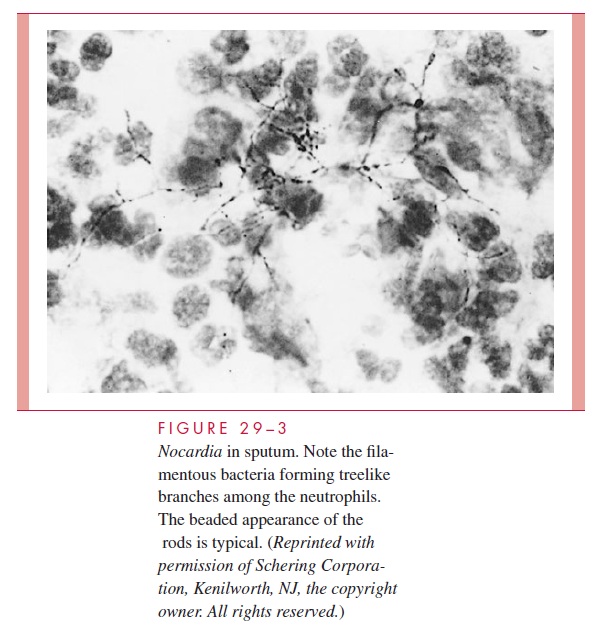Chapter: Medical Microbiology: An Introduction to Infectious Diseases: Actinomyces and Nocardia
Nocardia - Bacteriology
NOCARDIA
BACTERIOLOGY
Nocardia species are Gram-positive, rod-shaped bacteria that show true branching both inculture and in stains from clinical lesions. The microscopic morphology is similar to that of Actinomyces, although Nocardia tend to fragment more readily and are found as shorter branched units throughout the lesion rather than concentrated in a few colonies or granules. Many strains take the Gram stain poorly, appearing “beaded” with alternating Gram-positive and Gram-negative sections of the same filament (Fig 29 – 3). The species most common in human infection (N. asteroides and N. brasiliensis) are weakly acid fast.
In contrast to Actinomyces, Nocardia species are strict aerobes. Growth typically ap-pears on ordinary laboratory medium (blood agar) after 2 to 3 days incubation in air. Colonies initially have a dry, wrinkled, chalk-like appearance, are adherent to the agar, and eventually develop white to orange pigment. Speciation involves uncommon tests such as the decomposition amino acids and casein.

Related Topics